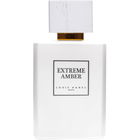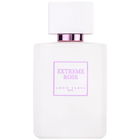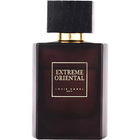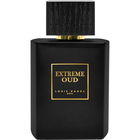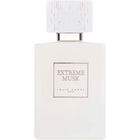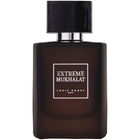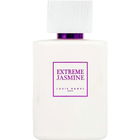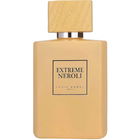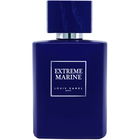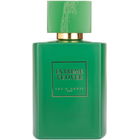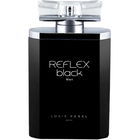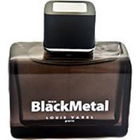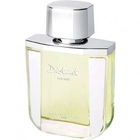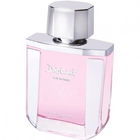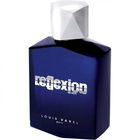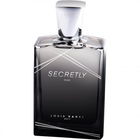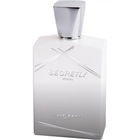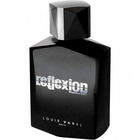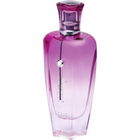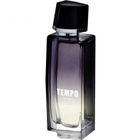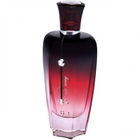
Seerose
775 Reviews
Translated · Show original

Seerose
Top Review
Rose Geranium Scent
So far, I have only tested one fragrance in which a scent geranium (Balkan geranium) was clearly identifiable. It was a fragrance from Wonderchest, a NY perfumer who creates purely eco-friendly scents.
On this occasion, I realized that our beloved balcony flowers, the geraniums, belong to the geraniaceae family. And that there are many varieties with the most diverse scent profiles.
The balcony geranium has a strongly repellent smell, which is why it is rarely infested by pests. I seem to remember that even snails avoid it.
But time and again, we find in fragrances, especially on the packaging with the ingredient list: Geraniol.
And this is processed based on certain scent geraniums/geraniaceae, among other things, as a fragrance for roses and peonies.
I personally only knew the lemon balm geranium as a scent geranium, which clearly smells strongly of lemon balm.
However, when you read the perfume name "Magda Rosa," you expect a rose scent.
I am not even a fan of rose scents; either they smell too overpowering of rose for me, or I smell little to no rose, instead more like rose hip tea, which means sour fruits or very citrusy roses. Only combined with wood, incense, oud, and oak moss or mosses do I find beautiful rose scents.
Now I have here a small O-sample of "Magda Rosa." Sama lists speik-nard, rose, amyris, and geranium for "Magda Rosa."
Of course, I tested the first samples without looking again here. I immediately thought of geranium as part of the rose family. I was very curious about the combination with speik-nard and amyris. How would the rose smell in this triad?
It proceeds today to the third test just like the first:
After applying and drying, I briefly smell a very beautiful, distinct rose, together with subtly used speik-nard. I find that instantly beautiful. Unfortunately, the rose is not perceivable to me for more than five minutes. The speik-nard remains present in the background throughout the entire scent development.
Then a slightly fuzzy citrus note flashes briefly. This is followed by a somewhat foreign, slightly sharp, strict, and herb-floral plant scent, which I do not perceive as green. Once I get used to it, I also smell lemon balm. In my mind's eye and sense of smell, the lemon balm geranium with its fuzzy, feathered leaves emerges, which releases the scent as soon as you touch the leaves.
Sama has listed amyris, which also smells somewhat fizzy like lemon balm to me.
I also suspect elemi, which smells citrusy to me as well.
Overall, a herb-aromatic lemony-citrusy scent develops, while always remaining strangely herb-floral.
Cautiously, I write with three question marks in my notes: Scent or rose geranium, very dominant?
I find that I really like the initially unfamiliar herb-floral and somewhat harsh scent. However, it also reminds me of "Altesse Mysore" by Alexandre, which has a different caliber in terms of sillage. Altesse Mysore especially lacks the foreign plant-flower scent.
As it progresses, "Magda Rosa" becomes powdery, milder, and I also speculate on labdanum.
The finish remains characteristically that of aromatic, sour, herb flowers; "Magda Rosa" becomes quite gentle in the further course.
After the first test, I, of course, saw the listed ingredients here and was really pleased to see that on 13.09.19, "Bourbon Rose Geranium" is prominently listed. So I recognized it correctly.
It is the herb-floral scent of a scent geranium, in this case, a rose geranium, that I perceive. Even with the third generous application while writing this comment, the scent progression and my scent perceptions are the same as during the first test.
The sillage is initially strong but becomes more restrained. The overall longevity is very good at 6 to 8 hours for a scent made using old methods and described as largely organic.
In my opinion, "Magda Rosa" is a very natural perfume with a brittle allure.
For me, "Magda Rosa" proves the assurances given by "Sama" on their homepage, as well as in the very kindly personal email correspondence, to be honest statements.
On this occasion, I realized that our beloved balcony flowers, the geraniums, belong to the geraniaceae family. And that there are many varieties with the most diverse scent profiles.
The balcony geranium has a strongly repellent smell, which is why it is rarely infested by pests. I seem to remember that even snails avoid it.
But time and again, we find in fragrances, especially on the packaging with the ingredient list: Geraniol.
And this is processed based on certain scent geraniums/geraniaceae, among other things, as a fragrance for roses and peonies.
I personally only knew the lemon balm geranium as a scent geranium, which clearly smells strongly of lemon balm.
However, when you read the perfume name "Magda Rosa," you expect a rose scent.
I am not even a fan of rose scents; either they smell too overpowering of rose for me, or I smell little to no rose, instead more like rose hip tea, which means sour fruits or very citrusy roses. Only combined with wood, incense, oud, and oak moss or mosses do I find beautiful rose scents.
Now I have here a small O-sample of "Magda Rosa." Sama lists speik-nard, rose, amyris, and geranium for "Magda Rosa."
Of course, I tested the first samples without looking again here. I immediately thought of geranium as part of the rose family. I was very curious about the combination with speik-nard and amyris. How would the rose smell in this triad?
It proceeds today to the third test just like the first:
After applying and drying, I briefly smell a very beautiful, distinct rose, together with subtly used speik-nard. I find that instantly beautiful. Unfortunately, the rose is not perceivable to me for more than five minutes. The speik-nard remains present in the background throughout the entire scent development.
Then a slightly fuzzy citrus note flashes briefly. This is followed by a somewhat foreign, slightly sharp, strict, and herb-floral plant scent, which I do not perceive as green. Once I get used to it, I also smell lemon balm. In my mind's eye and sense of smell, the lemon balm geranium with its fuzzy, feathered leaves emerges, which releases the scent as soon as you touch the leaves.
Sama has listed amyris, which also smells somewhat fizzy like lemon balm to me.
I also suspect elemi, which smells citrusy to me as well.
Overall, a herb-aromatic lemony-citrusy scent develops, while always remaining strangely herb-floral.
Cautiously, I write with three question marks in my notes: Scent or rose geranium, very dominant?
I find that I really like the initially unfamiliar herb-floral and somewhat harsh scent. However, it also reminds me of "Altesse Mysore" by Alexandre, which has a different caliber in terms of sillage. Altesse Mysore especially lacks the foreign plant-flower scent.
As it progresses, "Magda Rosa" becomes powdery, milder, and I also speculate on labdanum.
The finish remains characteristically that of aromatic, sour, herb flowers; "Magda Rosa" becomes quite gentle in the further course.
After the first test, I, of course, saw the listed ingredients here and was really pleased to see that on 13.09.19, "Bourbon Rose Geranium" is prominently listed. So I recognized it correctly.
It is the herb-floral scent of a scent geranium, in this case, a rose geranium, that I perceive. Even with the third generous application while writing this comment, the scent progression and my scent perceptions are the same as during the first test.
The sillage is initially strong but becomes more restrained. The overall longevity is very good at 6 to 8 hours for a scent made using old methods and described as largely organic.
In my opinion, "Magda Rosa" is a very natural perfume with a brittle allure.
For me, "Magda Rosa" proves the assurances given by "Sama" on their homepage, as well as in the very kindly personal email correspondence, to be honest statements.
10 Comments




 Bourbon geranium
Bourbon geranium Amyris
Amyris Damask rose
Damask rose Spikenard
Spikenard Seerose
Seerose